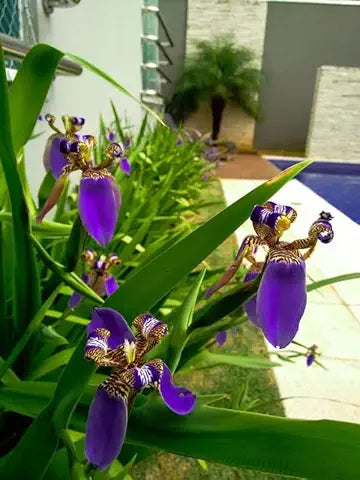Iris Blume Rare Easy Grow Plant Seeds
Couldn't load pickup availability
Description
Iris Seeds
Welcome to bijaseeds, a big, trusted name in the USA seed market with a vast, high-quality selection of non-GMO seeds and heirloom seeds. Our Iris Seeds offer gardeners a chance to grow iconic, elegant blooms that add sophistication to any landscape. These flower seeds, perfect as seeds for planting, cater to all skill levels, delivering a stunning array of colors and forms with timeless appeal.
Characteristics and Uses of Iris Plants
These iris seeds produce plants ranging from 12-36 inches tall, depending on the variety, with sword-like leaves and intricate, ruffled flowers in shades of purple, blue, yellow, white, and more. Blooming from late spring to early summer, they shine as perennial seeds, returning year after year to grace borders, beds, or water features. Their striking blooms attract pollinators like bees and butterflies, while also serving as exquisite cut flowers for elegant arrangements.
Growing Conditions for Iris Plants
- Light Requirements: Thrives in full sun to partial shade, needing 6-8 hours of sunlight daily for best blooms.
- Soil Preferences: Prefers well-draining soil with a pH of 6.0-7.0; tolerates varied fertility.
- Temperature Range: Grows best in 55-75°F (13-24°C), hardy in cooler climates once established.
Planting Tips for Iris
- Timing: Sow indoors 8-weeks before the last frost or directly outdoors in fall for spring blooms.
- Depth: Plant seeds ¼ inch deep; soaking in water for 2hours can aid germination.
- Spacing: Space 12-18 inches apart to accommodate mature clumps and ensure airflow.
Watering Instructions and Tips
- Frequency: Water with 1 inch weekly during growth; reduce after blooming to avoid rot.
- Method: Water at the base to keep foliage dry, minimizing fungal issues.
- Tips: Ensure good drainage; mulch lightly to retain moisture without soaking roots.
Growing Zones
- USDA Zones: Hardy in zones 3-9; some varieties adapt to specific conditions within this range.
- Global Zones: Suits temperate climates, thriving in cool springs and mild summers worldwide.
Key Benefits & Uses
- Vivid Variety: Offers a rainbow of colors for a striking garden display.
- Longevity: Perennial nature ensures years of beauty with minimal replanting.
- Pollinator Support: Enhances biodiversity with nectar-rich blooms.
Best Uses in the Garden & Landscape
- Borders: Adds height and color along pathways or fences.
- Water Gardens: Complements ponds or streams with upright elegance.
- Landscape Design: Creates sustainable focal points in mixed beds or cottage gardens.
Conclusion
Iris Seeds from bijaseeds, a big, trusted name in the seed world, offering a wide range of high-quality, non-GMO varieties to gardeners everywhere, promise a blend of grace and resilience. Elevate your garden with these perennial treasures that bloom with effortless beauty year after year.
FAQ
How do I grow Iris Seeds?
Soak seeds in water for 2hours, then plant ¼ inch deep in well-draining soil. Start indoors 8-weeks before the last frost or sow outdoors in fall, spacing 12-18 inches apart, and keep moist in full sun or partial shade.
When should I plant Iris Seeds?
Sow indoors in late winter (February-March) or directly outdoors in fall (September-October) to establish roots for spring blooming.
Are Iris Seeds difficult to grow?
No, they’re manageable with basic care—light, water, and drainage—making them rewarding for beginners and seasoned gardeners alike.







